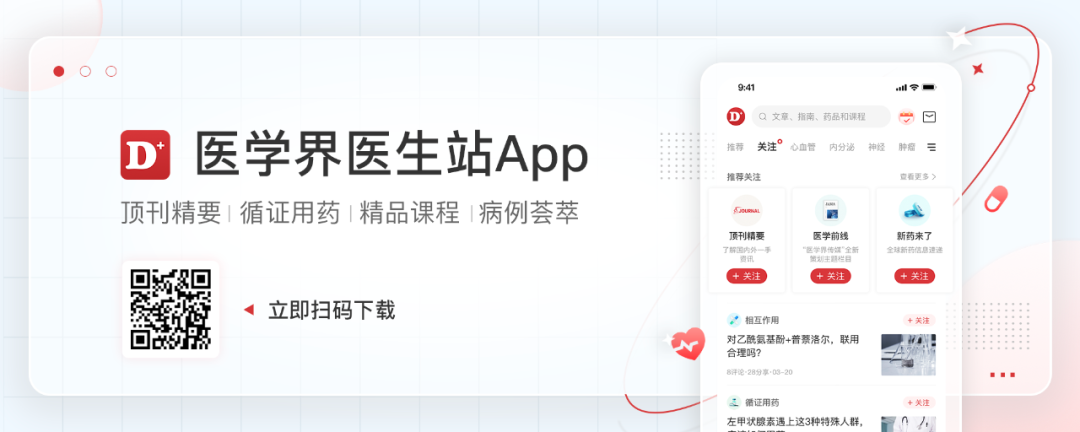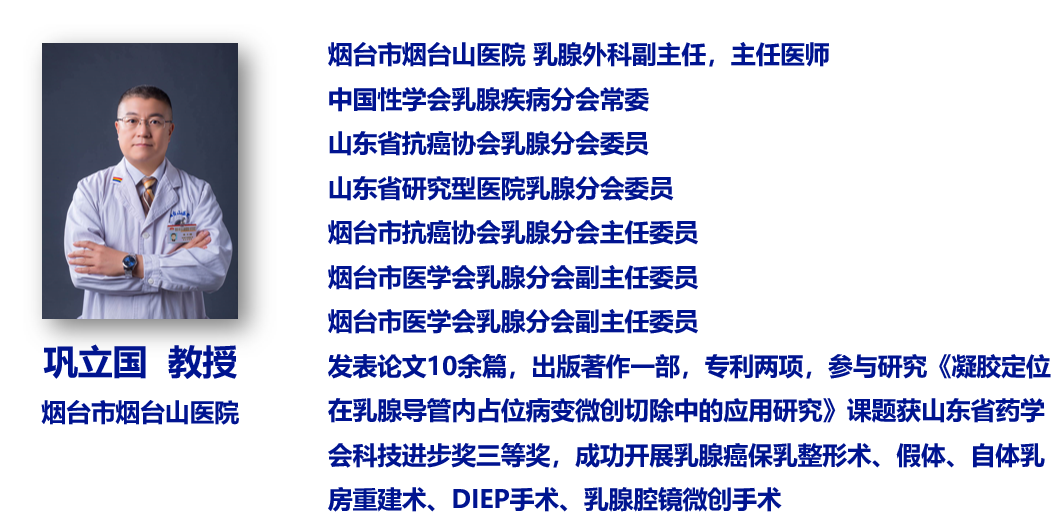Comprehensively interpret the "Early Breast Cancer Gene Testing Application Expert Consensus" from the evidence -based basis
Author:Cancer Channel of the Medical Time:2022.09.20
*For medical professionals for reading reference

Multi-gene detection guidance T1-2n0-1 Early early infiltration breast cancer auxiliary chemotherapy decisions.
Breast cancer is the highest incidence of cancer among women in the world. Among them, early (phase Ⅱ) breast cancer accounts for 73.1%[1], and the most common subtype is HR+/HER2-. The characteristics of clinical pathological characteristics such as lymph node metastasis, age, tumor size, and tissue classification, as well as biological characteristics such as Ki-67, can affect the recurrence risk of HR+/HER2-early breast cancer. Of the HR+/HER2-early breast cancer people, about 30 % of patients still have the risk of recurrence, which leads to the possible progress of the migration to the incurable metastasis, and the risk of recurrence of patients with high-risk clinical pathology characteristics is higher.
Auxiliary chemotherapy is an important means of HR+/HER2-early breast cancer auxiliary therapy, but only 2%-20%of patients can truly benefit from chemotherapy [2]. For patients with high-risk HR+/HER2-early breast cancer patients, there is no enough evidence to support chemotherapy strengthening strategies, and whether the "exemption" of chemotherapy can be "exempt" in low-risk patients has become an urgent answer. The weight.
Multi -gene testing the expression level of specific genes, evaluating and predicting the efficacy of the prognosis of different patients, thereby guiding the decision -making of breast cancer auxiliary chemotherapy, radiotherapy and endocrine therapy. tool. The China Anti -Cancer Association International Medical and Exchange Branch and the Chinese Medical Doctors Association December Physician Branch released the "Consensus on Early Breast Cancer Gene Testing Application Experts" [3]. Based on this consensus, this article mainly explains Oncotype DX (21 gene) and Related evidence -based medical evidence and clinical applications of Mammmmmmmmmmmmmmmmprint.
01
Oncotype DX's postoperative assistance
Chemotherapy clinical application
Oncotype DX By detecting the expression of a set of 21 specific genes in the malignant tumor tissue, it provides information for prediction prediction, recurrence, metastasis, and even guiding treatment. The ultimate purpose is to help patients' individualized therapy. As a result, recurrence score, RS RS )express.
研究Tailorx research
In the random control study of the stage of Tailorx III, the researchers conducted a forward -looking verification of the value of patients' prognosis and predicting chemotherapy at the Oncotype DX. 25 points) and high -risk group (RS ≥ 26 points). A total of 10273 patients with HR+/HER2-N0 were incorporated in patients with influential breast cancer in the HR+/HER2-N0. The low-risk group only received endocrine therapy. The medium-danger group was randomly divided into endocrine therapy group and endocrine combined chemotherapy group. The high-risk group received endocrine combined chemotherapy. The results of the 9 -year follow -up show that the survival rate (IDFS) rate (IDFS) of the internal secretion group and endocrine combined chemotherapy group (83.3%vs 84.3%), the recurrence rate (94.5%vs 95.0%) and the overall survival (OS) rate (93.9%vs 93.8%) is similar. The Asian group analysis shows that among patients aged ≤50 years old, the auxiliary chemotherapy can reduce RS 16-20 points and 21-25 points of 9-year remote recurrence rates by 1.6%and 6.5%, respectively, so the recommended age ≤50 years old Patients with RS 16-25 points for postoperative chemotherapy [4].
During the second analysis, the researchers introduced clinical factors of tumor size and tissue grading combined with RS scores to jointly predict patients' chemotherapy benefits. The results show that patients with age ≤50 years old and RS 11-25 are accepted The 9 -year remote recurrence rate of nine years without receiving chemotherapy (3.9 ± 1.0%vs 4.7 ± 1.0%); but in the clinical high -risk group, the 9 -year remote recurrence rate of patients with chemotherapy is lower than those who are not chemotherapy (6.1 ± 1.8% VS12.3 ± 2.4%), suggesting that patients who have menopausal and clinical high -risk may gain more benefits from chemotherapy. In addition, regardless of clinical risk, patients with age ≤50 years and low -risk RS scores have a low 9 -year remote recurrence rate [5].
For patients with positive lymph nodes, in the SWOG S8814 study, scholars retrospectively analyzed 367 patients with postmenopausal cancer patients with hr+/HER2-lymph node metastasis. 95%CI: 1.33-5.27, RS difference is 50 points; P = 0.006). In patients with chemotherapy combined with endocrine therapy, low-risk groups (RS <18 points) have no significant chemotherapy benefits (HR = 1.02, 95%CI: 0.54-1.93, P = 0.97), and high-risk groups (RS> 31 points) Compared with the endocrine therapy group, the survival of disease-free (DFS) has improved significantly (HR = 0.59, 95%CI: 0.35-1.01, P = 0.033) [6].
研究Rxponder research
In the RXPONDER Phase III random control clinical trial, the researchers conducted forward-looking verification of the prognosis and predictive value of Oncotype DX in the positive patients of lymph nodes. In addition, patients with RS <25 points of breast cancer are randomly divided into endocrine single -drug group and chemotherapy combined with endocrine group. It mainly evaluates whether chemotherapy can benefit low -risk N1 patients. The results showed that the 5 -year IDFS rate of the entire group was 91.6%, the chemotherapy combined endocrine group was 92.2%, and the endocrine single drug group was 91.0%(P = 0.10). There are significant differences in the benefits of chemotherapy (P = 0.008) of patients with pre -menopause and postmenopausal patients. The IDFS rates of chemotherapy combined with endocrine group and endocrine single drug group after menopausal patients were 91.3%and 91.9%(HR = 1.02, 95%CI: 0.82-1.26, P = 0.89). The IDFS rates of chemotherapy combined with endocrine therapy group and endocrine single drug group before menopause were 93.9%and 89.0%(HR = 0.60, 95%CI: 0.43-0.83, P = 0.002), indicating that before menopausal women could from chemotherapy from chemotherapy Benefiting, but the benefits of relative chemotherapy with the increase of recurrence scores have not increased. It should be noted that only 34.4%of patients with positive lymph nodes are positive in the group, so they still need to treat the conclusion carefully for such patients.
02
Mammaprint's postoperative assistance
Chemotherapy clinical application
Mammaprint is a 70 gene testing tool for early breast cancer patients. The main role is to remind the patient's 5 -year recurrence risk and guide early breast cancer treatment decisions to assist whether chemotherapy is required.
研究Mindact research
In MindACT research, researchers conducted forward-looking verification of the prognosis value of mammaprint. The research group 6693 patients with early N0-1 patients with early infiltration breast cancer, of which 5402 (80.7%) were HR+/HER2-, all patients Both Mammaprint detects gene risks, and at the same time, adjuvant! Online clinical pathological system determines clinical risks. According to the patient's test results, patients with both clinical and genetic and genetic low -risk are not accepted for postoperative assistance chemotherapy. For patients with inconsistency of recurrence risk assessment (clinical low risk and high -risk, clinical high -risk, and low -risk of genes), random distribution into chemotherapy groups or unpaid chemotherapy groups. 5 years of no distant transfer survival (DMFS) rate is 97.6%, and patients with both clinical and genetic dual -high -risk groups have the lowest DMFS rate (90.6%) in 5 years; The 5-year DMFS rates were 95.9%and 94.4%(HR = 0.78, 95%CI: 0.50-1.21, P = 0.27). The group DMFS rate was 96.3%, and the non -chemotherapy group was 95.6%. For patients with low clinical and high -risk genes, the 5 -year DMFS rate of chemotherapy and unpaid chemotherapy groups were 95.8%and 95.0%(HR = 1.17, 95%CI CI : 0.59-2.28, P = 0.66), and the benefits of chemotherapy are not prompted. The results of the study reminded that Mammaprint allows 46.2%of clinical high -risk patients to avoid chemotherapy and avoid excessive treatment [8].
The results of the 8 -year follow -up of MindACT showed that patients with double -dual -risk groups in clinical and genetic dual -low -risk groups only applied for endocrine therapy 94.7%, and the prognosis in four groups of patients was the best to remove chemotherapy. The 8 -year DMFS rate is 85.9%, which is the worst in the four groups of patients. It is prompted to benefit from chemotherapy. The 8-year DMFS rate of the chemotherapy group and the non-chemotherapy group of patients with low-risk genes and low-risk groups were 92.0%and 89.4%(HR = 0.66, 95%CI: 0.48-0.92). -The patient analyzes the sub -group, and the results show that the effect of chemotherapy on the 8 -year DMFS rate of chemotherapy varies from age. For the <50 -year -old patient, the 8 -year DMFS rate of the chemotherapy group and the non -chemotherapy group is 93.6%and 88.6%(HR HR (HR (HR = 0.54, 95%CI: 0.30-0.98), prompting that these patients may benefit from chemotherapy; while the 8-year DMFS rate of the 8-year-old patient chemotherapy group and unlimited chemotherapy group were 90.2%and 90.0%(HR = 0.82 95%CI: 0.55-1.24) means that this part of the patient has not benefited from chemotherapy. [9].
03
Summarize
Consensus points out [2]: For patients N0 patients detected by oncotype DX, RS <11 points for overall transfer risk is <4%, and chemotherapy can be considered. RS must be judged according to menstruation at 11-25 minutes; For patients 50, RS can consider exempting chemotherapy at 11-15 points. RS is 16-25 cents chemotherapy can bring a small amount of benefits, but it cannot be ruled out whether the OFS effect of chemotherapy is affected. Considering subsequent endocrine therapy for chemotherapy or subsequent endocrine therapy or Endocrine therapy combined with OFS drugs; for patients with> 50 -year -old, chemotherapy can be considered, and chemotherapy (recommended level: 1A) is recommended for RS = 26 points. For patients with N1 detected by oncotype DX, RS <26 minutes must be judged according to menstruation. For pre -menopause patients, the use of chemotherapy on the basis of endocrine therapy can reduce the remote recurrence rate, but it cannot be ruled out whether it is affected by the OFS effect of chemotherapy. Considering the follow -up endocrine therapy of chemotherapy, or endocrine therapy combined with OFS drugs; postmenopausal patients can consider after menopause patients, consider considering Exemptation chemotherapy, RS> 26 minutes, chemotherapy (recommendation level: 1A). For patients with N0-1 detected by Mammaprint, Mammaprint testing is not recommended in clinical low risk; clinical high risk and gene low risk patients have a good prognosis, chemotherapy benefits are low, and chemotherapy can be considered (in Phase N1 patients, there may be tiny in patients N1 patients. Benefiting, but chemotherapy benefits are mostly common in patients with <50 years old, and they have not yet made it clear whether the beneficiary of the chemotherapy is related to the OFS role caused by chemotherapy. Therefore, this part of the patient still needs to consider the use of OFS drugs in subsequent treatment); Chemotherapy (recommended level: 1A) is recommended at high risk.
Although the multi -gene detection tool provides a basis and guidance for postoperative assistant therapy clinical decisions, there are still some problems and attention in the real application in Chinese clinical practice:
At present, the original research on ONcotype DX is not yet available in our country. The domestic 21 gene test is a imitation Oncotype DX. Most laboratories or pathological departments use homemade testing tools. There may be differences or differences between the results between different units. consider.
The formulation of clinical decisions requires combining clinical pathological characteristics with the test results of genetic tools.
Oncotype DX detection is <50 years old and N0, RS is 16-25 or N1, RS <26 points, Mammaprint detection <50 years old low-risk N1 phase patient chemotherapy benefits cannot be ruled out whether chemotherapy is generated by chemotherapy generate The effect of OFS, subsequent treatment needs to consider combined with OFS drugs.
references:
[1] ZENG H, RAN X, An L, et al.disparities in Stage at diagnosis for Five Common Cancersin China: A Multicentre, Hospital-Based, Observational [J] .lancet Public HEALALALALALALALARARARAAOAOAOAOAOAOAOAOAAAAAOAAAAAAEAAAAAAAAOAAAAEAAAAAAAAAAEAAEAAAAAE sameEAAAAAAAAAAAAAAAAAAAct same sameEct samectctctctctctctctctctctct same same samectctctctctctctctctctctctctctct samectctarsarsiate self self self free setth. E877-E887.DOI: 10.1016/S2468-2667 (21) 00157-2.

[2] DIGNAM JJ, Dukic V, Anderson SJ, et al.hazard of recurrence and Adjuvant Treatment Effects Over Time in Lymph Node-Negative Breast Cancer [J]. : 10.1007/S10549-008-0200-5.
[3] The China Anti -Cancer Association International Medical and Exchange Branch, the Chinese Medical Doctors Association Oncologist Branch of the Breast Cancer Team, Hormonal Human Positive Epidermal Growth Factors Harbor 2 negative early breast cancer auxiliary treatment of multi -gene test application expert consensus, consensus, China Oncology Magazine. 20122; 44 (1): 54-59.
[4] Sparano Ja, Gray RJ, Makower DF, et al.adjuvant Chemotherapyguided by 21-Gene Expression Assay in Breast Cancer [j] .n English, 2018,379 (2): 111-121.doi: 10.1056// Nejmoa1804710.
[5] Sparano Ja, Gray RJ, RAVDIN PM, ET Al.Clinical and Genomic Risk TO Guide the Use of Adjuvant therapy for Breast Cancer [j] .n English (25): 2395-2405.Doi: 10.1056/NEJMoa1904819.[6]Albain KS,Barlow WE,Shak S,et al.Prognostic and predictive value of the 21-gene recurrence score assay in postmenopausaloestrogen-receptor-positive breast cancer on chemotherapy:a retrospective analysis of a randomised trial[ J] .lancet oncol, 2010, 11 (1): 55-65.doi: 10.1016/WOMENWINODE-POSITIVE, S1470-2045 (09) 70314-6.
[7] Kalinsky K, Barlow We, Gralow JR, ET Al.21-Gene assay to information, /www.nejm.org/doi/full/10.1056/nejmoa2108873.doi:10.1056/nejmoa2108873. ((PUBLIISHED OF Print).
[8] Cardoso F, Van'TER LJ, Bogaerts J, ET Al.70-Geneture Asan Aid to Treatment DeCisions in Early-Stage Breast Cancer 729.DOI: 10.1056/nejmoa1602253.
[9]Piccart M,van't Veer LJ,Poncet C,et al.70-gene signature as an aid for treatment decisions in early breast cancer:updated results of the phase 3 randomised MINDACT trial with an exploratory analysis by age[J ] .Lancet oncol, 2021,22 (4): 476488.doi: 10.1016/S1470-2045 (21) 00007-3.
Disclaimer: Materials are supported by Astrikon, for reference for medical and health professionals
Approval number: CN-102469
*This article is only used to provide scientific information to medical people, and does not represent the viewpoint of this platform


- END -
Notice on further optimization and adjustment of the prevention and control of the epidemic (No. 16)
About to further optimize and adjust the epidemic prevention and controlNotice on work(No. 16)In order to efficiently coordinate the prevention and control of the epidemic and the development of econo
The only neutral and antibody drugs in the world that can be used in the new crown's pre -exposure of the new crown landing Music City

On July 5th, the official website of Hainan Free Trade Port Boao Le City Internati...